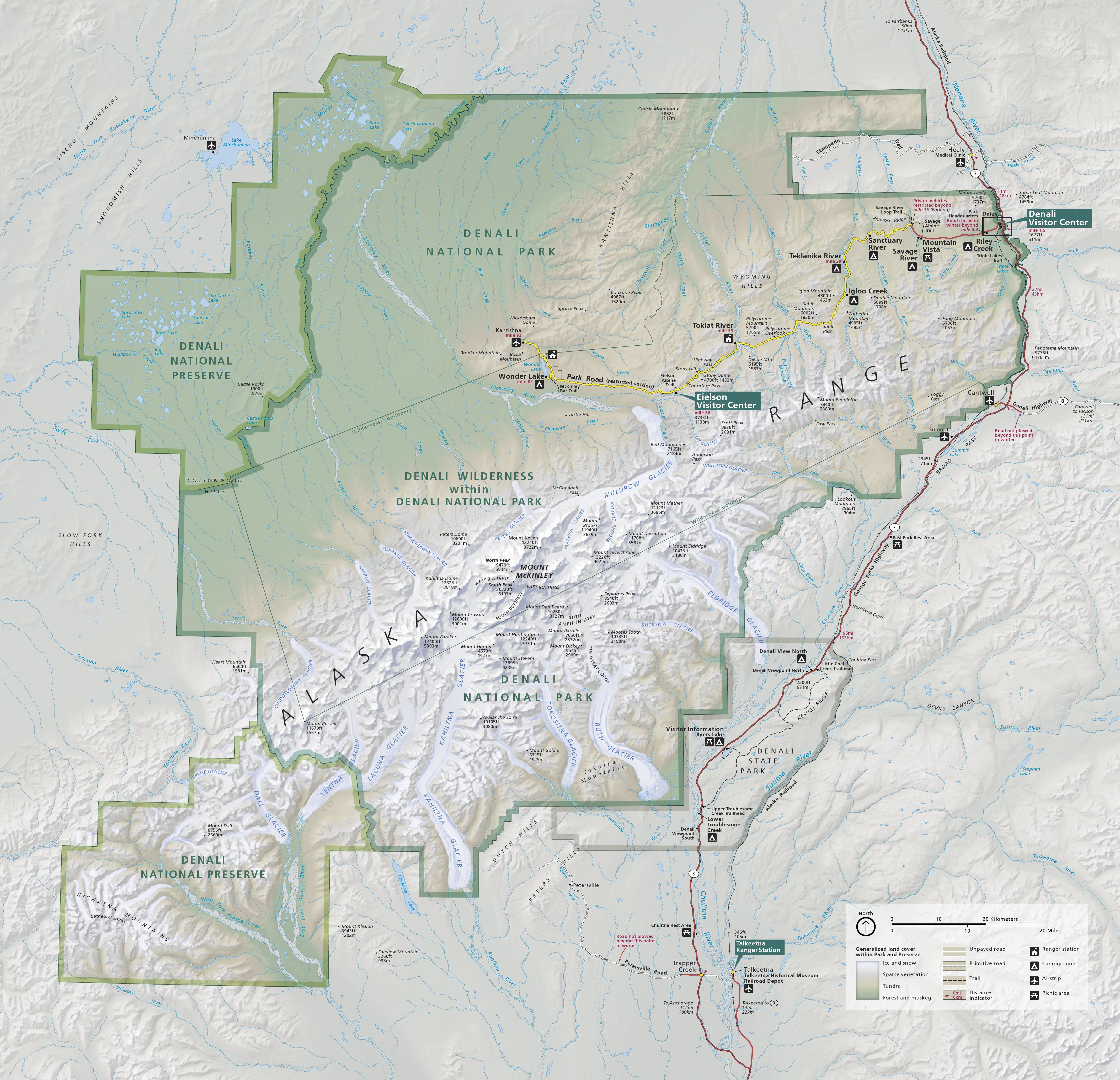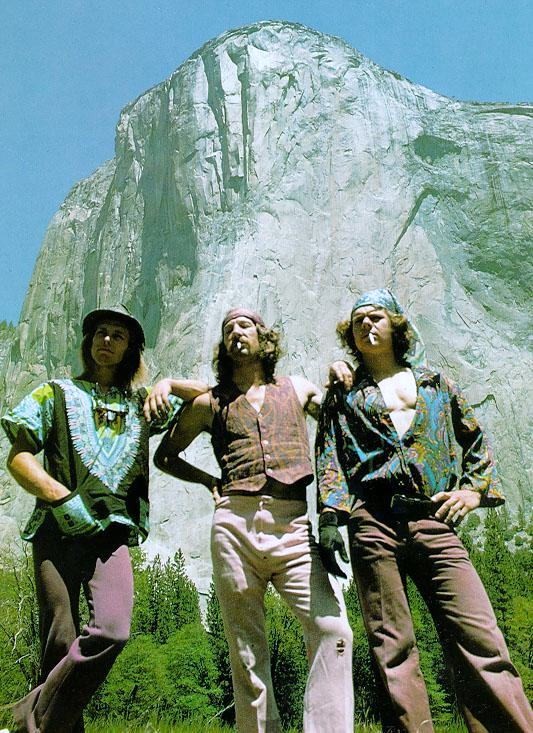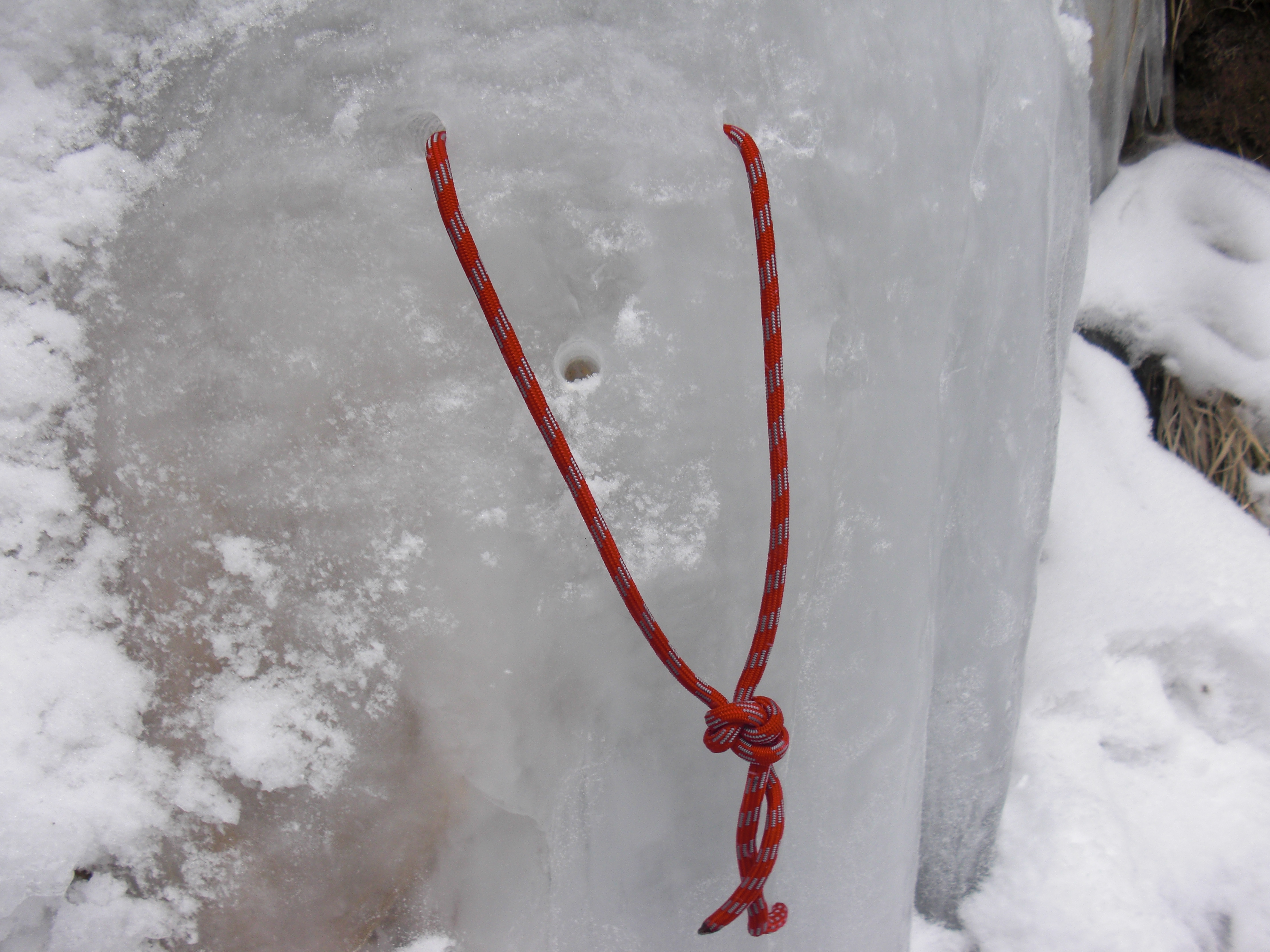|
Moose's Tooth
The Moose's Tooth (or simply Moose's Tooth, Mooses Tooth) is a rock peak on the east side of the Ruth Gorge in the Central Alaska Range, 15 miles (24 km) southeast of Denali. Despite its relatively low elevation, it is a difficult climb. It is notable for its many large rock faces and its long ice couloirs, which are famous in mountaineering circles, and have seen a number of highly technical ascents. The peak was originally called Mount Hubbard after General Thomas Hamlin Hubbard — the president of the Peary Arctic Club — by Belmore Browne and Herschel Parker. This name was revoked by the United States Geological Survey, which named the peak "The Mooses Tooth," a translation of the Athabascan name for the peak.That "Moose's Tooth" is a native name for the peak is attested by Bradford Washburn in "Mapping McKinley's Southeast Approaches", '' American Alpine Journal'', 1956, p. 49. The official USGS name does lack the grammatically correct apostrophe. The M ... [...More Info...] [...Related Items...] OR: [Wikipedia] [Google] [Baidu] |
Denali National Park And Preserve
Denali National Park and Preserve, formerly known as Mount McKinley National Park, is an American national park and preserve located in Interior Alaska, centered on Denali, the highest mountain in North America. The park and contiguous preserve encompass which is larger than the state of New Hampshire. On December 2, 1980, Denali Wilderness was established within the park. Denali's landscape is a mix of forest at the lowest elevations, including deciduous taiga, with tundra at middle elevations, and glaciers, snow, and bare rock at the highest elevations. The longest glacier is the Kahiltna Glacier. Wintertime activities include dog sledding, cross-country skiing, and snowmobiling. The park received 594,660 recreational visitors in 2018. History Prehistory and protohistory Human habitation in the Denali Region extends to more than 11,000 years before the present, with documented sites just outside park boundaries dated to more than 8,000 years before the present. However, rel ... [...More Info...] [...Related Items...] OR: [Wikipedia] [Google] [Baidu] |
Buckskin Glacier
Buckskin Glacier is a glacier in Denali National Park and Preserve in the U.S. state of Alaska. The glacier originates on the east side of The Moose's Tooth, flowing east, then southeast, for before giving rise to the Hidden River. See also * List of glaciers A glacier ( ) or () is a persistent body of dense ice that is constantly moving under its own weight; it forms where the accumulation of snow exceeds its ablation (melting and sublimation) over many years, often centuries. Glaciers slowly deform ... References Glaciers of Matanuska-Susitna Borough, Alaska Glaciers of Denali National Park and Preserve Glaciers of Alaska {{Alaska-glacier-stub ... [...More Info...] [...Related Items...] OR: [Wikipedia] [Google] [Baidu] |
Mountains Of Alaska
A mountain is an elevated portion of the Earth's crust, generally with steep sides that show significant exposed bedrock. Although definitions vary, a mountain may differ from a plateau in having a limited summit area, and is usually higher than a hill, typically rising at least 300 metres (1,000 feet) above the surrounding land. A few mountains are isolated summits, but most occur in mountain ranges. Mountains are formed through tectonic forces, erosion, or volcanism, which act on time scales of up to tens of millions of years. Once mountain building ceases, mountains are slowly leveled through the action of weathering, through slumping and other forms of mass wasting, as well as through erosion by rivers and glaciers. High elevations on mountains produce colder climates than at sea level at similar latitude. These colder climates strongly affect the ecosystems of mountains: different elevations have different plants and animals. Because of the less hospitable terrain and ... [...More Info...] [...Related Items...] OR: [Wikipedia] [Google] [Baidu] |
Mountains Of Matanuska-Susitna Borough, Alaska
A mountain is an elevated portion of the Earth's crust, generally with steep sides that show significant exposed bedrock. Although definitions vary, a mountain may differ from a plateau in having a limited summit area, and is usually higher than a hill, typically rising at least 300 metres (1,000 feet) above the surrounding land. A few mountains are isolated summits, but most occur in mountain ranges. Mountains are formed through tectonic forces, erosion, or volcanism, which act on time scales of up to tens of millions of years. Once mountain building ceases, mountains are slowly leveled through the action of weathering, through slumping and other forms of mass wasting, as well as through erosion by rivers and glaciers. High elevations on mountains produce colder climates than at sea level at similar latitude. These colder climates strongly affect the ecosystems of mountains: different elevations have different plants and animals. Because of the less hospitable terrain a ... [...More Info...] [...Related Items...] OR: [Wikipedia] [Google] [Baidu] |
Joseph Puryear
Joseph Nicholi Puryear (1973 – October 27, 2010) was an American mountain climber. Early life Puryear was born in 1973 to Gail and Shirley Puryear and was raised on their winery in Yakima Valley, Washington. In his youth, he took up carpentry, winemaking and farm work, and developed an interest in mountain climbing after his parents took him to Mount Adams when he was fifteen. He attended the University of Washington, where he earned a degree in mathematics. Mountaineering Beginning in 1996, Puryear worked for four seasons as a climbing ranger at Mount Rainier National Park, where he met fellow ranger Mark Westman. Puryear and Westman climbed together in the North Cascades, Yosemite National Park, Patagonia, and most frequently, the Alaska Range. In Alaska, they made ascents of Mount McKinley's south buttress and Cassin Ridge (2000) and Mount Foraker's Infinite Spur (2001). Puryear's other achievements in the Alaska Range included the first ascent of the Black Crystal Arête ... [...More Info...] [...Related Items...] OR: [Wikipedia] [Google] [Baidu] |
The Moose&
''The'' () is a grammatical article in English, denoting persons or things already mentioned, under discussion, implied or otherwise presumed familiar to listeners, readers, or speakers. It is the definite article in English. ''The'' is the most frequently used word in the English language; studies and analyses of texts have found it to account for seven percent of all printed English-language words. It is derived from gendered articles in Old English which combined in Middle English and now has a single form used with pronouns of any gender. The word can be used with both singular and plural nouns, and with a noun that starts with any letter. This is different from many other languages, which have different forms of the definite article for different genders or numbers. Pronunciation In most dialects, "the" is pronounced as (with the voiced dental fricative followed by a schwa) when followed by a consonant sound, and as (homophone of pronoun ''thee'') when followed by a v ... [...More Info...] [...Related Items...] OR: [Wikipedia] [Google] [Baidu] |
Mooses Tooth From Barrille Summit
The moose (in North America) or elk (in Eurasia) (''Alces alces'') is a member of the New World deer subfamily and is the only species in the genus ''Alces''. It is the largest and heaviest extant species in the deer family. Most adult male moose have distinctive broad, palmate ("open-hand shaped") antlers; most other members of the deer family have antlers with a dendritic ("twig-like") configuration. Moose typically inhabit boreal forests and temperate broadleaf and mixed forests of the Northern Hemisphere in temperate to subarctic climates. Hunting and other human activities have caused a reduction in the size of the moose's range over time. It has been reintroduced to some of its former habitats. Currently, most moose occur in Canada, Alaska, New England (with Maine having the most of the lower 48 states), New York State, Fennoscandia, the Baltic states, Poland, Kazakhstan, and Russia. Its diet consists of both terrestrial and aquatic vegetation. Predators of moose incl ... [...More Info...] [...Related Items...] OR: [Wikipedia] [Google] [Baidu] |
Jim Bridwell
Jim Bridwell (July 29, 1944 – February 16, 2018) was an American rock climber and mountaineer, active since 1965, especially in Yosemite Valley, but also in Patagonia and Alaska. He was noted for pushing the standards of both free climbing and big-wall climbing, and later alpine climbing. He wrote numerous articles on climbing for leading sport publications. He was an apprentice to Royal Robbins and Warren Harding (climber). He was the unofficial leader of the Stonemasters. Bridwell is credited with over 100 First Ascents in Yosemite Valley, in addition to conducting the first one-day ascent of The Nose of El Capitan on May 26, 1975 with John Long and Billy Westbay. He founded Yosemite National Park's Search and Rescue Team (YOSAR), and spearheaded many rescues that became textbook for search-and-rescue operations. He was a leading force in the changing techniques of climbing and an innovator/inventor of widely used and copied climbing gear, including copperheads and ... [...More Info...] [...Related Items...] OR: [Wikipedia] [Google] [Baidu] |
Mugs Stump
Terry "Mugs" Stump (August 28, 1949 – May 21, 1992) was a noted American rock climber and mountaineer, active in establishing difficult first ascents in the Alaska Range and the Canadian Rockies. He died from falling into a crevasse while descending the South Buttress of Denali on May 21, 1992 while guiding clients Bob Hoffman and Nelson Max. He is most noted for the first ascent of the ''Emperor Face'' on Mount Robson with Jim Logan, and for three routes in the Alaska Range, the ''East Face'' of The Moose's Tooth, the ''Moonflower Buttress'' on Mount Hunter, and a one-day solo of Denali's ''Cassin Ridge''. Climber Conrad Anker credits Stump as an influential climbing mentor in the film '' Meru''. Stump, along with his geologist brother, contributed to field safety for the United States Antarctic Program scientists and other working on the continent for the National Science Foundation. The Mugs Stump Alpine Climbing Award for aspiring alpine climbers is named in ... [...More Info...] [...Related Items...] OR: [Wikipedia] [Google] [Baidu] |
Jon Krakauer
Jon Krakauer (born April 12, 1954) is an American writer and mountaineer. He is the author of bestselling non-fiction books—'' Into the Wild''; ''Into Thin Air''; ''Under the Banner of Heaven''; and '' Where Men Win Glory: The Odyssey of Pat Tillman''—as well as numerous magazine articles. He was a member of an ill-fated expedition to summit Mount Everest in 1996, one of the deadliest disasters in the history of climbing Everest. Early life Krakauer was born in Brookline, Massachusetts, as the third of five children of Carol Ann (née Jones) and Lewis Joseph Krakauer. His father was Jewish and his mother was a Unitarian, of Scandinavian descent. He was raised in Corvallis, Oregon. His father introduced the young Krakauer to mountaineering at the age of eight. His father was "relentlessly competitive and ambitious in the extreme" and placed high expectations on Krakauer, wishing for his son to attend Harvard Medical School and become a doctor. Krakauer wrote that this wa ... [...More Info...] [...Related Items...] OR: [Wikipedia] [Google] [Baidu] |
The Mooses Tooth Aerial
''The'' () is a grammatical article in English, denoting persons or things already mentioned, under discussion, implied or otherwise presumed familiar to listeners, readers, or speakers. It is the definite article in English. ''The'' is the most frequently used word in the English language; studies and analyses of texts have found it to account for seven percent of all printed English-language words. It is derived from gendered articles in Old English which combined in Middle English and now has a single form used with pronouns of any gender. The word can be used with both singular and plural nouns, and with a noun that starts with any letter. This is different from many other languages, which have different forms of the definite article for different genders or numbers. Pronunciation In most dialects, "the" is pronounced as (with the voiced dental fricative followed by a schwa) when followed by a consonant sound, and as (homophone of pronoun ''thee'') when followed by a v ... [...More Info...] [...Related Items...] OR: [Wikipedia] [Google] [Baidu] |
Glossary Of Climbing Terms
__NOTOC__ This glossary of climbing terms is a list of definitions of terms and jargon related to rock climbing and mountaineering. The specific terms used can vary considerably between different English-speaking countries; many of the phrases described here are particular to the United States and the United Kingdom. A B Completing the climb upon one's first attempt ever. Often confused with 'flashing' which is the first attempt of the day. There is a second opportunity for a climber to 'blitz' a wall after 12 months. C D E ... [...More Info...] [...Related Items...] OR: [Wikipedia] [Google] [Baidu] |



.png)



